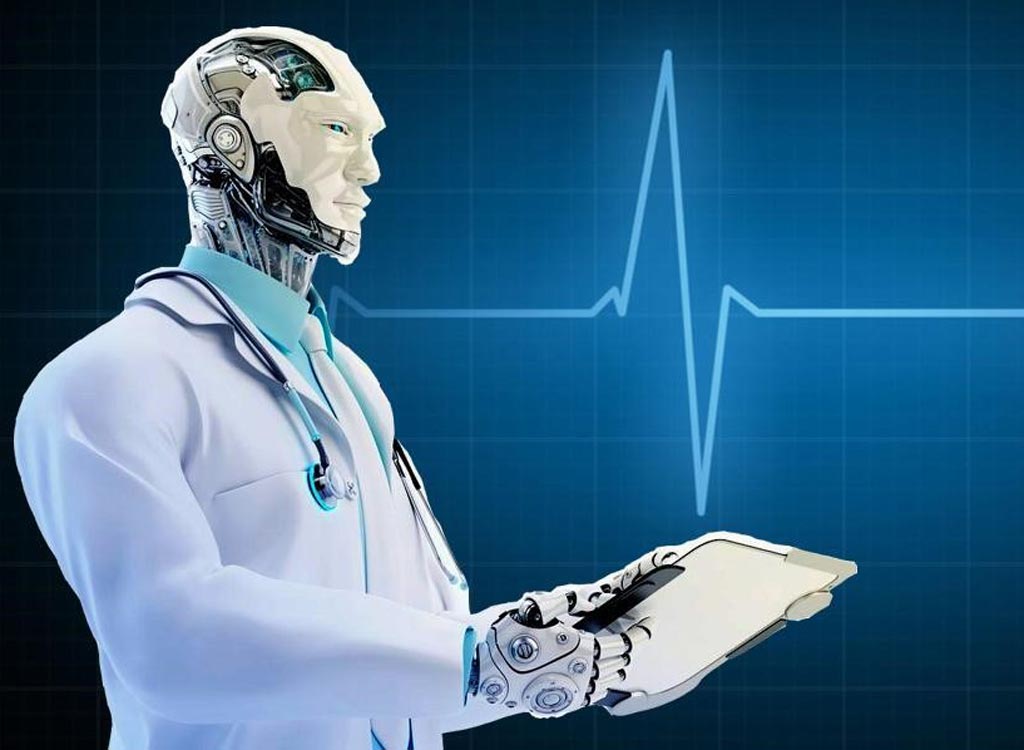Machine Learning Model Predicts Treatment with Dialysis or Death for Hospitalized COVID-19 Patients
|
By HospiMedica International staff writers Posted on 31 May 2021 |

Illustration
A team of researchers have created a machine learning model to predict treatment with dialysis or death for hospitalized COVID-19 patients.
The study by researchers from the Mount Sinai Health System (New York, NY, USA) used a machine learning model to determine COVID-19 patients most at risk for treatment requiring dialysis or critical illness leading to death. SARS-CoV-2, the virus that causes COVID-19, has infected more than 103 million people worldwide. Acute kidney injury (AKI) treated with dialysis was a common complication in patients who were hospitalized with COVID-19. AKI is associated with increased risks for morbidity and mortality. Early prediction of which patients will need dialysis or experience critical illness, leading to mortality during hospital care can enhance appropriate monitoring, and better inform conversations with patients and their caretakers.
The Mount Sinai team developed and tested five different algorithms to predict patients requiring treatment with dialysis or critical illness leading to death on day 1, 3, 5, and 7 of the hospital stay, using data from the first 12 hours of admission to the Mount Sinai Health System. Assessed features included demographics, comorbidities, laboratory results, and vital signs within 12 hour of hospital admission. The five models created and tested were: the logistic regression, LASSO, random forest, and XGBoost with and without imputation. Out of the total model approaches used, XGBoost without imputation had the highest area under the receiver curve and area under the precision recall curve on internal validation for all time points. This model also had the highest test parameters on external validation across all time windows. Features including red cell distribution width, creatinine, and blood urea nitrogen were major drivers of model prediction.
While the Mount Sinai model requires further external review, such machine learning models can potentially be deployed throughout healthcare systems to help determine which COVID-19 patients are most at risk for adverse outcomes of the coronavirus. Early recognition of at-risk patients can enhance closer monitoring of patients and prompt earlier discussions regarding goals of care.
“The near universal use of electronic health records has created a tremendous amount of data, which has enabled us to generate prediction models that can directly aid in the care of patients,” said Dr. Girish Nadkarni, MD, Associate Professor in the Department of Medicine (Nephrology), Clinical Director of the Hasso Plattner Institute for Digital Health, and Co-Chair of the Mount Sinai Clinical Intelligence Center at the Icahn School of Medicine at Mount Sinai. “A version of this model is currently deployed at Mount Sinai Hospital in patients who are admitted with COVID-19.”
“As a nephrologist, we were overwhelmed with the increase in patients who had AKI during the initial surge of the COVID-19 pandemic,” said Dr. Lili Chan, MD, Assistant Professor in the Department of Medicine (Nephrology) at the Icahn School of Medicine at Mount Sinai. “Prediction models like this enable us to identify, early on in the hospital course, those at risk of severe AKI (those that required dialysis) and death. This information will facilitate clinical care of patients and inform discussions with patients and their families.”
“Machine learning allows us to discern complex patterns in large amounts of data,” said Dr. Akhil Vaid, MD, postdoctoral fellow in the Department of Genetics and Genomic Sciences at the Icahn School of Medicine at Mount Sinai, and member of the Mount Sinai Clinical Intelligence Center and the Hasso Plattner Institute for Digital Health at Mount Sinai. “For COVID-19 inpatients, this means being able to more easily identify incoming at-risk patients, while pinpointing the underlying factors that are making them better or worse. The underlying algorithm, XGBoost, excels in accuracy, speed, and other under-the-hood features that allow for easier deployment and understanding of model predictions.”
Related Links:
Mount Sinai Health System
The study by researchers from the Mount Sinai Health System (New York, NY, USA) used a machine learning model to determine COVID-19 patients most at risk for treatment requiring dialysis or critical illness leading to death. SARS-CoV-2, the virus that causes COVID-19, has infected more than 103 million people worldwide. Acute kidney injury (AKI) treated with dialysis was a common complication in patients who were hospitalized with COVID-19. AKI is associated with increased risks for morbidity and mortality. Early prediction of which patients will need dialysis or experience critical illness, leading to mortality during hospital care can enhance appropriate monitoring, and better inform conversations with patients and their caretakers.
The Mount Sinai team developed and tested five different algorithms to predict patients requiring treatment with dialysis or critical illness leading to death on day 1, 3, 5, and 7 of the hospital stay, using data from the first 12 hours of admission to the Mount Sinai Health System. Assessed features included demographics, comorbidities, laboratory results, and vital signs within 12 hour of hospital admission. The five models created and tested were: the logistic regression, LASSO, random forest, and XGBoost with and without imputation. Out of the total model approaches used, XGBoost without imputation had the highest area under the receiver curve and area under the precision recall curve on internal validation for all time points. This model also had the highest test parameters on external validation across all time windows. Features including red cell distribution width, creatinine, and blood urea nitrogen were major drivers of model prediction.
While the Mount Sinai model requires further external review, such machine learning models can potentially be deployed throughout healthcare systems to help determine which COVID-19 patients are most at risk for adverse outcomes of the coronavirus. Early recognition of at-risk patients can enhance closer monitoring of patients and prompt earlier discussions regarding goals of care.
“The near universal use of electronic health records has created a tremendous amount of data, which has enabled us to generate prediction models that can directly aid in the care of patients,” said Dr. Girish Nadkarni, MD, Associate Professor in the Department of Medicine (Nephrology), Clinical Director of the Hasso Plattner Institute for Digital Health, and Co-Chair of the Mount Sinai Clinical Intelligence Center at the Icahn School of Medicine at Mount Sinai. “A version of this model is currently deployed at Mount Sinai Hospital in patients who are admitted with COVID-19.”
“As a nephrologist, we were overwhelmed with the increase in patients who had AKI during the initial surge of the COVID-19 pandemic,” said Dr. Lili Chan, MD, Assistant Professor in the Department of Medicine (Nephrology) at the Icahn School of Medicine at Mount Sinai. “Prediction models like this enable us to identify, early on in the hospital course, those at risk of severe AKI (those that required dialysis) and death. This information will facilitate clinical care of patients and inform discussions with patients and their families.”
“Machine learning allows us to discern complex patterns in large amounts of data,” said Dr. Akhil Vaid, MD, postdoctoral fellow in the Department of Genetics and Genomic Sciences at the Icahn School of Medicine at Mount Sinai, and member of the Mount Sinai Clinical Intelligence Center and the Hasso Plattner Institute for Digital Health at Mount Sinai. “For COVID-19 inpatients, this means being able to more easily identify incoming at-risk patients, while pinpointing the underlying factors that are making them better or worse. The underlying algorithm, XGBoost, excels in accuracy, speed, and other under-the-hood features that allow for easier deployment and understanding of model predictions.”
Related Links:
Mount Sinai Health System
Latest COVID-19 News
- Low-Cost System Detects SARS-CoV-2 Virus in Hospital Air Using High-Tech Bubbles
- World's First Inhalable COVID-19 Vaccine Approved in China
- COVID-19 Vaccine Patch Fights SARS-CoV-2 Variants Better than Needles
- Blood Viscosity Testing Can Predict Risk of Death in Hospitalized COVID-19 Patients
- ‘Covid Computer’ Uses AI to Detect COVID-19 from Chest CT Scans
- MRI Lung-Imaging Technique Shows Cause of Long-COVID Symptoms
- Chest CT Scans of COVID-19 Patients Could Help Distinguish Between SARS-CoV-2 Variants
- Specialized MRI Detects Lung Abnormalities in Non-Hospitalized Long COVID Patients
- AI Algorithm Identifies Hospitalized Patients at Highest Risk of Dying From COVID-19
- Sweat Sensor Detects Key Biomarkers That Provide Early Warning of COVID-19 and Flu
- Study Assesses Impact of COVID-19 on Ventilation/Perfusion Scintigraphy
- CT Imaging Study Finds Vaccination Reduces Risk of COVID-19 Associated Pulmonary Embolism
- Third Day in Hospital a ‘Tipping Point’ in Severity of COVID-19 Pneumonia
- Longer Interval Between COVID-19 Vaccines Generates Up to Nine Times as Many Antibodies
- AI Model for Monitoring COVID-19 Predicts Mortality Within First 30 Days of Admission
- AI Predicts COVID Prognosis at Near-Expert Level Based Off CT Scans
Channels
Critical Care
view channel
AI Heart Attack Risk Assessment Tool Outperforms Existing Methods
For decades, doctors have relied on standardized scoring systems to assess patients with the most common type of heart attack—non-ST-elevation acute coronary syndrome (NSTE-ACS). The GRACE score, used... Read more
'Universal' Kidney to Match Any Blood Type
Blood-type incompatibility has long been one of the greatest obstacles in organ transplantation, forcing thousands of patients—particularly those with type O blood—to wait years longer for compatible donors.... Read moreSurgical Techniques
view channel
Minimally Invasive Endoscopic Surgery Improves Severe Stroke Outcomes
Intracerebral hemorrhage, a type of stroke caused by bleeding deep within the brain, remains one of the most challenging neurological emergencies to treat. Accounting for about 15% of all strokes, it carries... Read more
Novel Glue Prevents Complications After Breast Cancer Surgery
Seroma and prolonged lymphorrhea are among the most common complications following axillary lymphadenectomy in breast cancer patients. These postoperative issues can delay recovery and postpone the start... Read morePatient Care
view channel
Revolutionary Automatic IV-Line Flushing Device to Enhance Infusion Care
More than 80% of in-hospital patients receive intravenous (IV) therapy. Every dose of IV medicine delivered in a small volume (<250 mL) infusion bag should be followed by subsequent flushing to ensure... Read more
VR Training Tool Combats Contamination of Portable Medical Equipment
Healthcare-associated infections (HAIs) impact one in every 31 patients, cause nearly 100,000 deaths each year, and cost USD 28.4 billion in direct medical expenses. Notably, up to 75% of these infections... Read more
Portable Biosensor Platform to Reduce Hospital-Acquired Infections
Approximately 4 million patients in the European Union acquire healthcare-associated infections (HAIs) or nosocomial infections each year, with around 37,000 deaths directly resulting from these infections,... Read moreFirst-Of-Its-Kind Portable Germicidal Light Technology Disinfects High-Touch Clinical Surfaces in Seconds
Reducing healthcare-acquired infections (HAIs) remains a pressing issue within global healthcare systems. In the United States alone, 1.7 million patients contract HAIs annually, leading to approximately... Read moreHealth IT
view channel
Printable Molecule-Selective Nanoparticles Enable Mass Production of Wearable Biosensors
The future of medicine is likely to focus on the personalization of healthcare—understanding exactly what an individual requires and delivering the appropriate combination of nutrients, metabolites, and... Read moreBusiness
view channel
Philips and Masimo Partner to Advance Patient Monitoring Measurement Technologies
Royal Philips (Amsterdam, Netherlands) and Masimo (Irvine, California, USA) have renewed their multi-year strategic collaboration, combining Philips’ expertise in patient monitoring with Masimo’s noninvasive... Read more
B. Braun Acquires Digital Microsurgery Company True Digital Surgery
The high-end microsurgery market in neurosurgery, spine, and ENT is undergoing a significant transformation. Traditional analog microscopes are giving way to digital exoscopes, which provide improved visualization,... Read more
CMEF 2025 to Promote Holistic and High-Quality Development of Medical and Health Industry
The 92nd China International Medical Equipment Fair (CMEF 2025) Autumn Exhibition is scheduled to be held from September 26 to 29 at the China Import and Export Fair Complex (Canton Fair Complex) in Guangzhou.... Read more

















